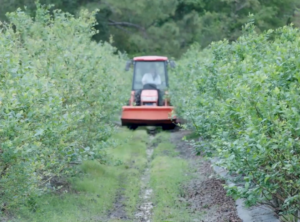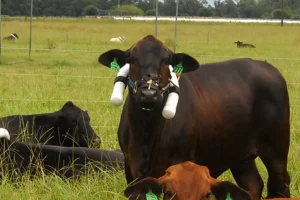Plus, $Millions to study cow burps
 Another piece of Everglades restoration to stem troublesome blue-green algae is now in place, a new report warns of an alarming drop in Florida farmland, and University of Florida researchers are receiving millions of federal dollars to study and reduce cow burps. It’s all in this week’s Environmental and Engineering Digest.
Another piece of Everglades restoration to stem troublesome blue-green algae is now in place, a new report warns of an alarming drop in Florida farmland, and University of Florida researchers are receiving millions of federal dollars to study and reduce cow burps. It’s all in this week’s Environmental and Engineering Digest.

Everglades Agricultural Area Cell 1 is flooded, January 25, 2024. Courtesy, SFWMD
Everglades Water Cleanup: Governor Ron DeSantis attended the opening of the first cell of the massive Everglades Agricultural Area on January 25th, with positive words to say about the facility and what it means for Florida’s future. “The EAA Reservoir is the crown jewel of Everglades restoration, ensuring that we are sending water south and reducing harmful discharges into our waterways,” said DeSantis. This landmark construction started 12 months ahead of schedule and is one of 65 other ribbon cuttings along Gov. DeSantis’ path to restoring Florida’s waterways. The treatment area will stop blue-green algae from further damaging ecosystems, cleaning and filtering water from Lake Okeechobee and then sending it south towards the Everglades – rather than east into the St. Lucie River and west to the Caloosahatchee River. The other two cells within the 6,500-acre EAA Reservoir should be online by this summer thanks to Executive Order 19-12, pumping $2.5 billion into Everglades restoration to expedite the construction process. At the start of his second term DeSantis doubled down, signing Executive Order 23-06 providing $3.5 billion more in Everglades restoration and water quality improvements.

Blueberry harvesting at Florida Blue Farms in Waldo, FL. Courtesy, Florida Department of Agriculture and Consumer Services
Florida Losing Farmland: The University of Florida Center for Landscape Conservation Planning released a report in coordination with the activist organization 1,000 Friends of Florida, revealing a rather grim future for Florida agriculture. As development continues across the state and sea levels continue to rise, the Sunshine State could lose up to 45,000 acres a year or 2.2 million acres of Florida farmland by 2070 and thousands of jobs with it. These affected areas are essential to Florida’s ecosystems, protecting water supply, providing flood control, harboring wildlife and providing areas for recreation, so the loss is more than that of a single industry – the health of the state hangs in the balance, warns the report. With more people moving to Florida each year, development and its consequences show no signs of stopping. The report includes recommendations to help mitigate some of this impact, including land protection programs, community planning, and market-based incentivization for land conservation.

Courtesy, USDA
Stopping Cows from Burping: Some scientists say livestock contributes far more to greenhouse gas emissions than we might think, with cow flatulation and burps in particular unleashing lots of methane into the atmosphere. Researchers at the University of Florida has just received a $5 million federal grant to find ways to temper this gassy output that they say traps heat in the Earth’s atmosphere. While methane in the air only has a lifespan of about 7 to 12 years, it traps about 25 times more heat than carbon dioxide. Lead UF researcher Nichloas DiLorenzo and his team are trying the addition of various enzymes in the cow’s food to break up some of the cow belches, which are 97% of its gas emissions.
LMA Newsletter of 2-5-2024

